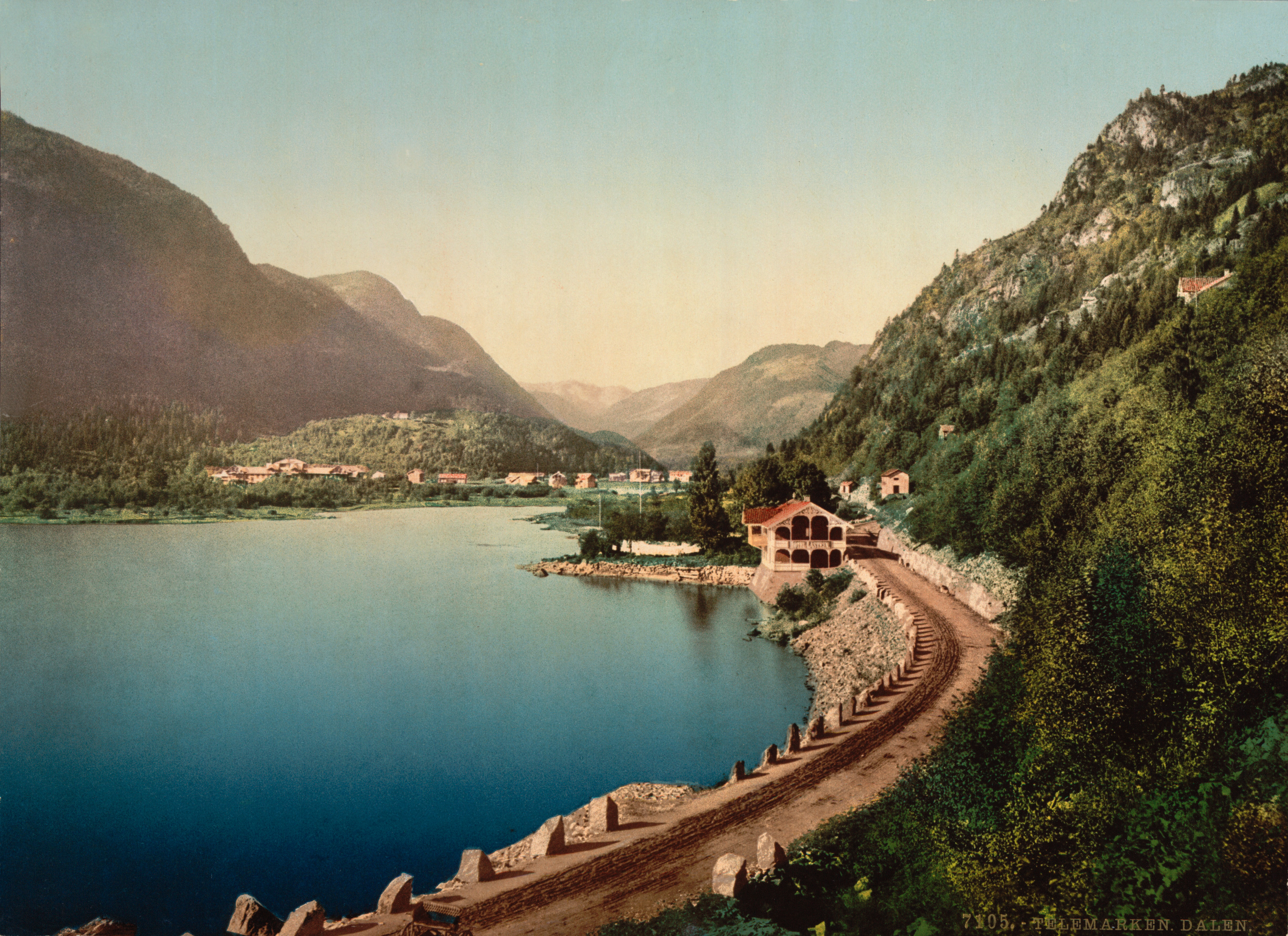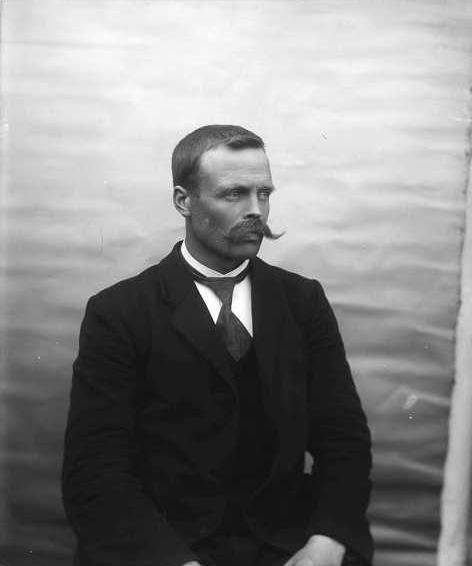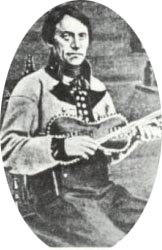|
Tokke Komm
Tokke is a municipality in Telemark in the county of Vestfold og Telemark in Norway. It is part of the traditional region of Vest-Telemark. The administrative centre of the municipality is the village of Dalen. The municipality of Tokke was created on 1 January 1964 upon the merger of the two older municipalities of Lårdal and Mo. Located in Lårdal, Eidsborg stave church is one of Norway's old stave churches. General information Name The name originally belongs to the river running through the municipality. The Old Norse form of the river name must have been ''Þotka'' and it is related to the name of the lake Totak (which it comes from). The river name is probably derived from the Norse word ''þot'' meaning "roaring, rushing, or howling". Coat-of-arms The coat-of-arms is from modern times. They were granted on 6 February 1987. The arms show a black bear on a gold background. The bear in the arms symbolizes the rich nature in the forests in the municipality. The bea ... [...More Info...] [...Related Items...] OR: [Wikipedia] [Google] [Baidu] |
Dalen, Telemark
Dalen is the administrative centre of Tokke municipality, Norway. Its population ( SSB 2005) is 801. Dalen is located on and around the delta where the river Tokke flows into the west end of the lake Bandak. Dalen is the westernmost endpoint of the Telemark Canal which runs to Skien in the east, and became a tourist site with the canal traffic. Dalen Hotel, built in 1894, is among the largest wooden buildings in Norway. Also in Dalen is the hydroelectric power station Tokke kraftverk which exploits the fall from the lake Vinje. Statkraft Statkraft AS is a hydropower company, fully owned by the Norwegian state. The Statkraft Group is a generator of renewable energy, as well as Norway’s largest and the Nordic region's third largest energy producer. Statkraft develops and generates ...'s regional headquarters for eastern Norway are located in Dalen, and manages 38 power stations. Dalen's population increased as the power systems were constructed in the 1950s, but declined again ... [...More Info...] [...Related Items...] OR: [Wikipedia] [Google] [Baidu] |
Coat Of Arms
A coat of arms is a heraldry, heraldic communication design, visual design on an escutcheon (heraldry), escutcheon (i.e., shield), surcoat, or tabard (the latter two being outer garments). The coat of arms on an escutcheon forms the central element of the full achievement (heraldry), heraldic achievement, which in its whole consists of a shield, supporters, a crest (heraldry), crest, and a motto. A coat of arms is traditionally unique to an individual person, family, state, organization, school or corporation. The term itself of 'coat of arms' describing in modern times just the heraldic design, originates from the description of the entire medieval chainmail 'surcoat' garment used in combat or preparation for the latter. Roll of arms, Rolls of arms are collections of many coats of arms, and since the early Modern Age centuries, they have been a source of information for public showing and tracing the membership of a nobility, noble family, and therefore its genealogy across tim ... [...More Info...] [...Related Items...] OR: [Wikipedia] [Google] [Baidu] |
Jens Matthias Pram Kaurin
Jens Matthias Pram Kaurin (25 November 1804 – 6 July 1863) was a Norwegian professor of theology, biblical translator, and Lutheran priest. He served as the Bishop of the Diocese of Bjørgvin from 1858 until 1861. Life and family Jens Kaurin was born in Laurdal in Telemark county, Norway. He studied theology at Christiania University and graduated with a Cand.theol. degree in 1826. On 22 December 1827, he married Petronelle Louise Hanna Thomasine Magelssen, and together, they had six children: Eiler Rosenvinge, Anne Marie, Christian, Wilhelm Andreas, Edvard, and Susanna Kristence Pram. Career In 1837, Kaurin was hired as a lecturer at Christiania University and he served in that capacity until 1843 when he was appointed as a professor of theology. In 1853, he resigned his job at the university to begin working as a priest at Lier in Buskerud county. He worked in Lier until 1858 when he was appointed Bishop of the Diocese of Bjørgvin, based in Bergen. He served as bisho ... [...More Info...] [...Related Items...] OR: [Wikipedia] [Google] [Baidu] |
Søren Georg Abel
Søren Georg Abel (3 January 1772 – 5 May 1820) was a Norwegian priest and politician, also known as the father of mathematician Niels Henrik Abel. Personal life Søren Georg Abel was born on 3 January 1772 in Mo, Telemark as the son of Hans Mathias Abel (1738–1803) and Elisabeth Knuth Normann (1737–1817).Genealogy (vestraat.net) In 25 March 1800, he married Anne Marie Simonsen. Their second oldest son was (1802-1829), the world-famous mathematician. Søren Georg Abel was also a great-grandfather of the politician Hans Prydz (1868–1957). Career ...[...More Info...] [...Related Items...] OR: [Wikipedia] [Google] [Baidu] |
Talleiv Huvestad
Talleiv Olavson Huvestad (1761 – 13 July 1847) was a Norwegian teacher, farmer and politician. Talleiv Olavson Huvestad was born on the Storaasli farm in the parish of Skafså in Øvre Telemark, Norway, the son of Olaf Tollefsson Storaasli (1724-1778) and Torbjør Gjermundsdotter Kjestveit (1734-1805). When his father died in his youth, he and his mother moved to the parish of Eidsborg in Tokke in Vest-Telemark where his mother married Vetle Huvestad. In 1794 he took over the Huvestad farm and on 7 November 1797 married Gjertud Rasmusdotter Mandt (1778-1845). They had 8 children. Besides farming, he served as a part-time teacher in rural Telemark villages. He acquired a special knowledge of health and justice and taught other farmers who sent their sons to him for training. He became deputy chairman of the village, and helped organize legal documents for other farmers. With his acquired health care skills, he served as both veterinarian and general practitioner. When vac ... [...More Info...] [...Related Items...] OR: [Wikipedia] [Google] [Baidu] |
Bykle
Bykle is a municipality in Agder county, Norway. It is located in the traditional district of Setesdal. The administrative centre of the municipality is the village of Bykle. Other villages in Bykle municipality include Berdalen, Bjåen, Breive, Hoslemo, Hovden, and Nordbygdi. Bykle was established as a municipality on 1 January 1902 when it was separated from the municipality of Valle. The municipality is the 60th largest by area out of the 356 municipalities in Norway. Bykle is the 337th most populous municipality in Norway with a population of 935. The municipality's population density is and its population has decreased by 3.6% over the previous 10-year period. General information The municipality of Bykle was created when it was separated from the older municipality of Valle on 1 January 1902 after a dispute over the costs of road building (Bykle was the bigger area, while Valle had more people and more money). Initially, Bykle had a population of 476 residents in t ... [...More Info...] [...Related Items...] OR: [Wikipedia] [Google] [Baidu] |
Valle, Norway
Valle () is a municipality in Agder county, Norway. It is located in the traditional district of Setesdal. The administrative centre of the municipality is the village of Valle. Other villages in Valle include Besteland, Brokke, Homme, Hovet, Rygnestad, Rysstad, and Uppstad. The municipality is the 82nd largest by area out of the 356 municipalities in Norway. Valle is the 321st most populous municipality in Norway with a population of 1,169. The municipality's population density is and its population has decreased by 9.6% over the previous 10-year period. General information Valle was established as a municipality on 1 January 1838 (see formannskapsdistrikt law). On 1 January 1902, the northern part of Valle (population: 476) was separated to become the separate municipality of Bykle. This left Valle with 1,720 inhabitants. On 1 July 1915, the southern district of Valle (population: 658) was separated to form the new municipality of Hylestad. This left Valle with a popul ... [...More Info...] [...Related Items...] OR: [Wikipedia] [Google] [Baidu] |
Fyresdal
Fyresdal is a municipality in Telemark in the county of Vestfold og Telemark in Norway. It is part of the traditional region of Vest-Telemark. The administrative centre of the municipality is the village of Moland. The municipality of ''Moland'' was established on 1 January 1838 (see formannskapsdistrikt). In 1879, the name was changed to ''Fyresdal''. General information Name The Old Norse form of the name was ''Fyrisdalr''. The first element is the genitive case of the name of the lake ''Fyrir'' (now called Fyresvatn). The last element is ''dalr'' which means "valley" or "dale". The name of the lake is derived from the word ''fura'' which means "pine tree". Prior to 1879, the municipality was called ''Moland''. Coat-of-arms The coat-of-arms is from modern times. They were granted in 1992. The arms show two silver-colored broadaxes on a green background. It was chosen to represent the forestry work in the municipality. History Fyresdal is known for its many findings fro ... [...More Info...] [...Related Items...] OR: [Wikipedia] [Google] [Baidu] |
Seljord
Seljord is a municipality in Telemark in the county of Vestfold og Telemark in Norway. It is part of the traditional regions of Upper Telemark and Vest-Telemark. The administrative centre of the municipality is the village of Seljord. The parish of ''Siljord'' was established as a municipality on 1 January 1838 (see formannskapsdistrikt). Seljord is famous for its sea serpent, Selma, who allegedly lives in Lake Seljord (''Seljordsvatnet''). The yearly Dyrsku'n market, held since 1866, attracts 60–80,000 visitors each year. The large fair started as a show of farm animals. Today it includes a huge market with vendors selling a variety of goods including base layer clothing, Bergans outdoors equipment, crafts, and food. Amusement rides are also featured. Seljord Folkehøgskule is located in Seljord. The school offers a variety of courses including outdoor adventure, theater, music, and art.Seljord Folk High School General information Name The municipality (originally the par ... [...More Info...] [...Related Items...] OR: [Wikipedia] [Google] [Baidu] |
Kviteseid
Kviteseid is a Municipalities of Norway, municipality in Telemark in the Counties of Norway, county of Vestfold og Telemark in Norway. It is part of the Districts of Norway, traditional region of Upper Telemark and Vest-Telemark. The administrative centre of the municipality is the village of Kviteseid. The parish of ''Hvideseid'' was established as a municipality on 1 January 1838 (see formannskapsdistrikt). Kviteseid Seminar was the first public school which started in 1819 and was in operation until 1889. Kviteseid Library (''Kviteseid Folkebibliotek'') was founded in 1895. The library was first based on a book collection from Kviteseid Seminar. The main industries of the municipality are forestry, agriculture, tourism, and hydroelectricity, hydroelectric power. The Telemark Canal goes through Kviteseid. There are also several ski resorts in Kviteseid. Vrådal is one of them. Within the municipality of Kviteseid, one finds the little village of Morgedal, also known as the "Crad ... [...More Info...] [...Related Items...] OR: [Wikipedia] [Google] [Baidu] |
Vinje
Vinje is a municipality in Telemark in the county of Vestfold og Telemark in Norway. It is part of the traditional regions of Upper Telemark and Vest-Telemark. The administrative center of the municipality is the village of Åmot. General information Name The municipality of Vinje (originally a parish) is named after the old ''Vinje'' farm (Old Norse: ''Vinjar''), since the first church was built there. The name is the plural form of ''vin'' which means "meadow" or "pasture". See also Vinje, Sør-Trøndelag. Coat-of-arms The coat-of-arms is from modern times. They were granted on 16 November 1990. The arms show a silver goat on a blue background. It is symbolic of the goat and sheep farming in the municipality. (See also the coat-of-arms for Aurland.) History Vinje was established as a municipality on 1 January 1838 (see formannskapsdistrikt). The area of Rauland was separated from Vinje in 1860 to become a municipality of its own. On 1 January 1964 Rauland was merged back ... [...More Info...] [...Related Items...] OR: [Wikipedia] [Google] [Baidu] |




.jpg)

